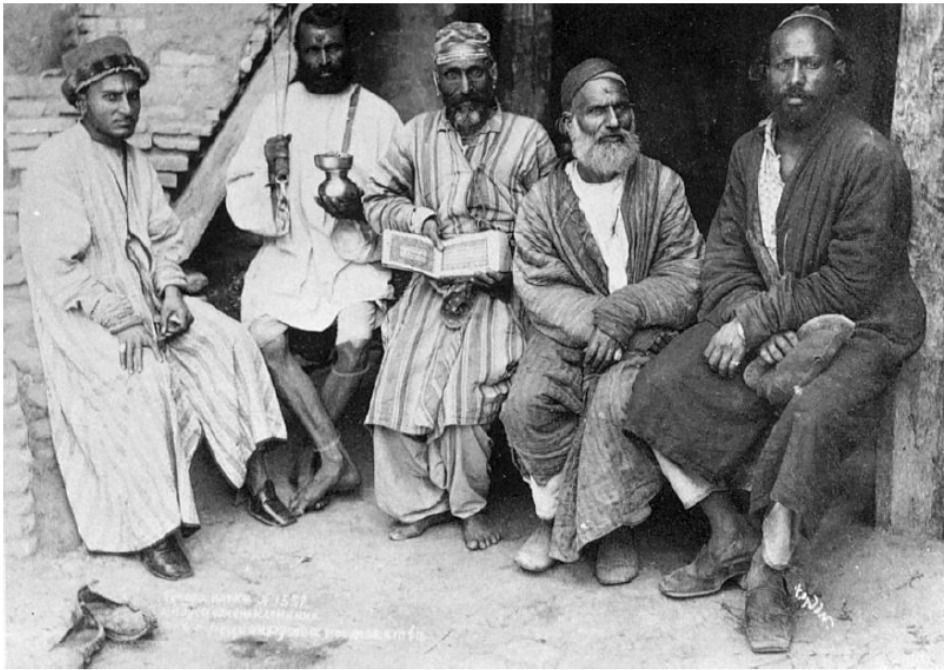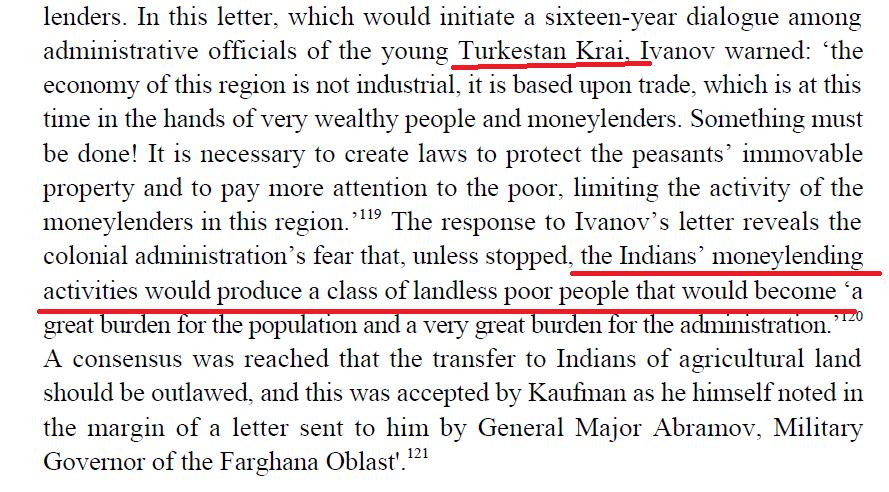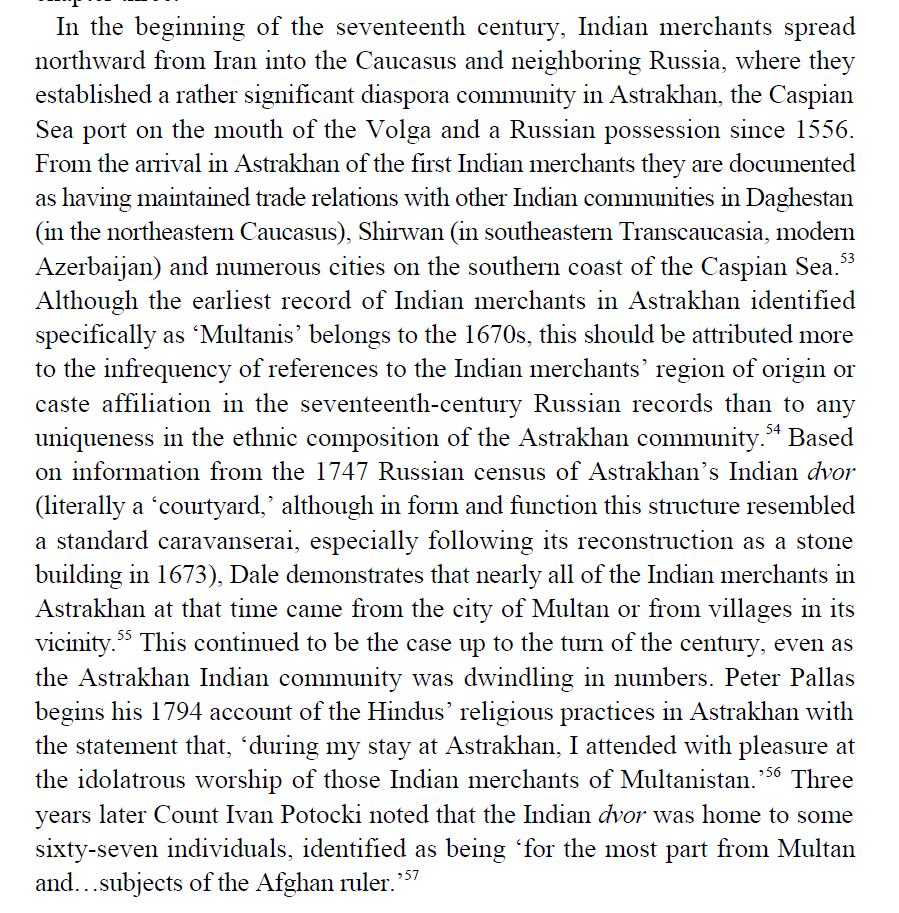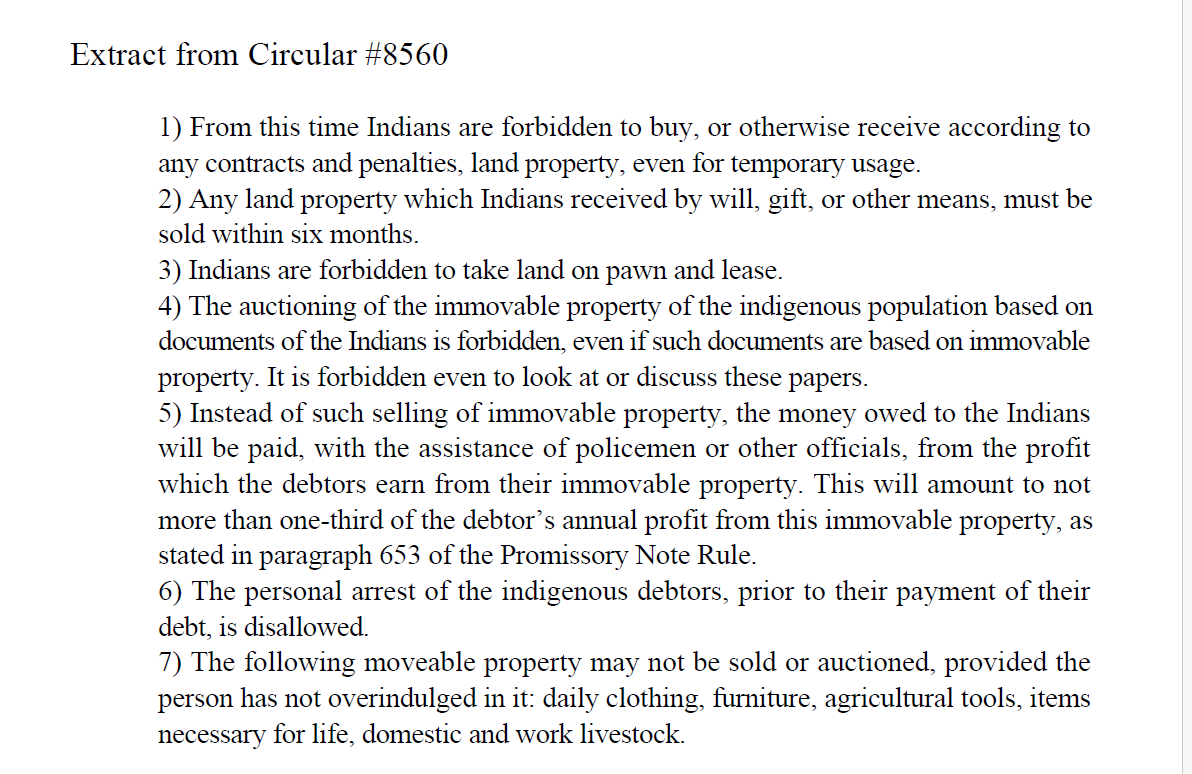Hindus in Tajikistan
There was a time when Hindu merchants owned almost half the land of Central Asia. Today, there are barely any Hindu merchants in Central Asia. Who were these Hindu merchants and what happened to them? Their history is barely known. However, this cannot underestimate their importance.

For example, in Turkestan ASSR, which comprises today’s Uzbekistan, Tajikstan, Turkmenistan and Kyrzystan, Sindhi Merchants owned almost 40% of the land in 1865.


These Merchants were Khatris, Aroras, Sindhis and Marwaris. Most of them belonged to Multan and they established colonies and caravanserais in Central asia and Russia as early as 16th century. They were mostly from Multan and Shikharpur.

By the dint of their sheer handwork, industry, intelligence, specifically their proficiency in account keeping and versatility in comprehension of various languages, these Hindu merchants had established themselves as indispensable to the function of societies of Afghanistan and Central Asia. In Afghanistan and Central Asia, Hindu merchants were the bankers who gave people credit and loans. In the absence of any central banking system in Pre-Modern world, this role was taken up by Hindu merchants.
As soon as Tzar Russia conquered Central Asia (Turkestan ASSR) in 1865, it began a policy of racial discrimination against Indians and appeasement of Tajiks to the detriment of Indians.
To curtail the influence of Indian traders, Russia passed a policy which ordered Indians to give up all their land in 6 months.
It forbade Indians from
- Buying any immovable property.
- Taking land on pawn and lease.
- All existing loans which were owed to Indians were nullified. It was forbidden to even look at those documents.
- Permitting Indians from any transaction of moveable property.
These restricts did not apply to Russians or Tajiks. In a stroke of pen, Russia took away all land owned by Indians.

Russia did this primarily to appease the Tajiks and Uzbeks. The Russian appeasement of Tajiks has been constant throughout history. 45% of today’s Tajikstan belongs to Gorno Badakhshan whose inhabitants are not Tajiks but Pamiris. In 1992, the Pamiri minority waged a civil war for independence. It was brutally crushed by Tajikstan with Russian help.
Tajik Muslim appeasement continues to this day. Around 50% of Tajik GDP came from Russian migrant remittances in 2013. Tajik Muslims can freely live and work anywhere in Russia. There are 1.5 million of them in Russia. History has shown that extreme appeasement towards those them has always backfired. Russian terror attack of March 22, 2024 is the latest example.